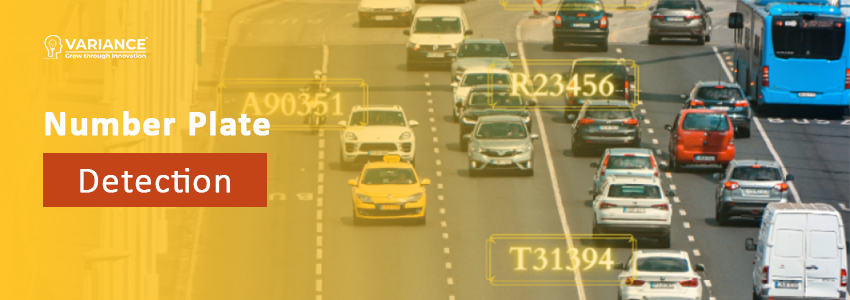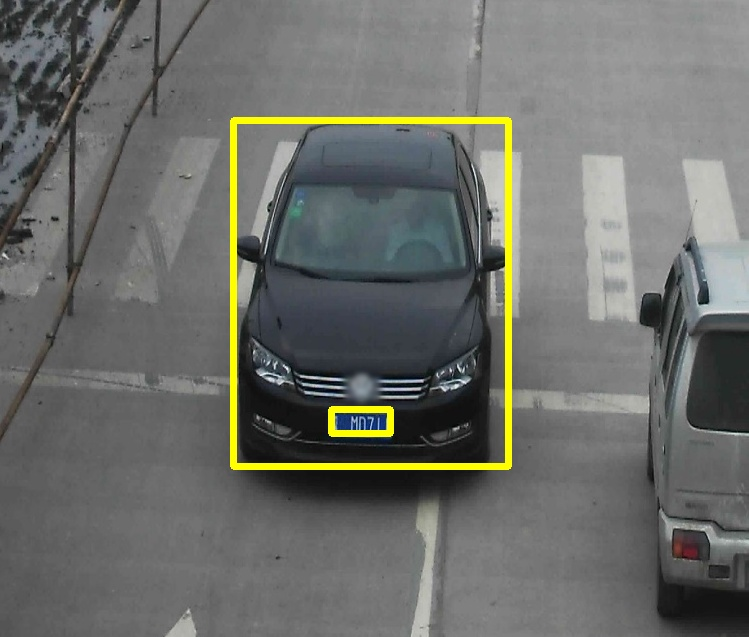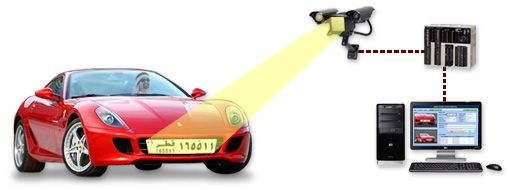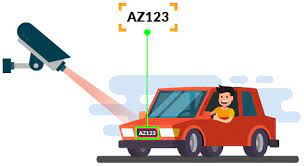
AI and computer vision is playing a major role in transportation evolution. Autonomous vehicle technology, fuel injection systems, self-driving cars, digital scanning, sensing and processing technologies, intelligent transportation systems, etc. are transforming many aspects of human life. In today’s post, I will discuss the novel system of vehicle number plate recognition, its use-case, significance, how it works, techniques, etc. Let’s unfold this further and see how computer vision can help recognize vehicle number plates seamlessly.
What is Vehicle Number Plate Detection?
Number plate detection (NPD) is one such innovative mechanism that identifies a specific part on the vehicle license plate and understands the characters using advanced technologies. It is one of the key functions of intelligent transportation systems.
Known as Registration Plate Recognition (RPR), or License Plate Recognition (LPR), the latest system of Vehicle Number Plate Recognition (NPR) uses AI, ML, deep learning, and computer vision powered approaches to read such license plates on vehicles without human interaction.

This advanced system of number plate identification captures an image from a moving vehicle, searches for a number plate, and extracts relevant alphanumerics with the aid of the optical character recognition (OCR) mechanism. It translates the characters into readable digital text, which can be used for various applications such as preventing car theft, automated toll tax collection, traffic control, etc. Authorities can install a number plate recognition mechanism on CCTV in many regions to identify vehicles and control other facets of inspection, traffic management applications, and safety. This automated system helps them track the actual entry/exit time of a vehicle and the amount of time it spends in a particular region.
Benefits:
1. 24/7 Monitoring:
Unlike other car park barrier systems, an automatic number plate recognition system will allow you to not only protect your car park, but monitor the access too. With ANPR cameras, you will have eyes on your car park 24 hours a day, 7 days a week. You will know exactly who has entered your premises, the time they enter and also the time they leave. This can be incredibly helpful in many situations.
2. Easy and Efficient:
While installing a heavy-duty security gate or having a manual check system is an effective deterrent against intruders, they can both be incredibly time-consuming for businesses.
It is always important to consider how easy it is for people you want to grant access to, such as employees and delivery vehicles, to get in and out.
Thankfully, an ANPR system is incredibly easy and efficient, people can come and go as required without you needing to do anything, but you will still know who has entered your premises.
3. Security:
One of the best benefits is the access to Gate Security which keeps your premises safe. Recently we are working on Army premises safety with an advanced AI Technology solution of ANPR System. If a camera with AI is paired with a security entrance solution and monitoring it constantly, such as a turnstile, security revolving door, or mantrap portal, it could take the detection capabilities currently built into these entrances to the next level in terms of identity verification and anti-tailgating/anti-piggybacking.
4. Cost-Effective:
As well as being easier and more efficient, ANPR technology is also one of the most cost-effective solutions for managing your car park. You will be able to cut costs and reduce the need for security personnel when you choose this smart solution. Many companies will also issue fines to anyone picked up by their ANPR system that shouldn’t be on their private property or anyone that has exceeded the maximum time limit. This can bring in extra money for the company and may even end up paying for this security solution.
5. Stand Alone:
Unlike the majority of other automatic car park barriers, ANPR cameras can operate in a way where all information is entirely processed on board so that no extra computers, or software licenses, are needed. These cameras also have optical character recognition software embedded which enables all images to be analysed directly on board the ANPR camera. Due to them being stand-alone solutions, ANPR cameras are quick, safe and light to install.
6. Provides Evidence:
Similarly to CCTV, automatic number plate recognition systems can provide you with the details regarding when someone was at your premises, whenever they are required. The images taken by this camera can be used as evidence and can provide valuable information that can be used in investigations. You can easily prove when the vehicle in question was on your premises and it will be all the hard evidence you need.
Where can we experience the Automated Vehicle Number Plate Detection System:
- Effective traffic law enforcement.
- Vehicle theft prevention.
- Journey time analysis.
- Automatic parking management (Smart Parking).
- Traffic management and traffic optimization.
- Automated collection of tolls and toll booth records.
- To assist visitor management systems in recognizing guest vehicles.
- Security monitoring and border crossings.
How Does Vehicle Number Plate Recognition System Work?
The sole purpose of the automated system is to distinguish vehicles by recognizing number plates. The automatic license plate recognition system consists of digital image capture units (like high-speed cameras with IR filters), application software (like video analytics software), processors capable of performing various object and character recognition, different algorithms to capture information from fast-moving vehicles, and an alert capability to notify operators. The system works like this:
1. Moving vehicle number plate identification – It first detects the vehicles and then captures, normalizes, and enhances the image of vehicle number plates using a series of image manipulation techniques.
2. Number plate character identification – Then OCR extracts accurate information such as the alphanumerics of the number plates.
3. Number plate character translation into encoded content – At last, the software verifies the sequence of those alphanumeric characters, converts them into text format, and stores the database.
Here’s a List of Considerable Popular Approaches:
For our Army Premises Safety Project we have implied Optical Character Recognition(OCR) which is an important computer vision technique for reading text from images. This allows the ANPR system to identify license plates. Image processing techniques such as Tesseract OCR or MaskOCR algorithms are used to detect individual characters, verify the sequence of those characters, and convert the number plate image to text.
1.1 Object detection using Haar-cascade:
A Haar-cascade classifier is a machine learning object detection program that identifies objects from images and videos. Typically, it slides a square window over an image and, at each location, asks a machine learning algorithm – “is this a number plate?”
1.2 Single Shot MultiBox Detector (SSD):
The SSD algorithm is used to detect objects and segment images, i.e., locate licence plates in images using a single deep neural network. It is a technique to create a bounding box (an area) for each segment within an image, allowing exact object detection and segmentation.
1.3 Histogram of Oriented Gradients (HOG):
HOG is widely used for object detection tasks and focuses on extracting features from images to obtain the object’s shape and structure. For the regions of the image, its feature descriptor generates histograms using the magnitude and orientations of the gradient.
1.4 Region-Based Convolutional Neural Networks (R-CNN):
The key concept behind R-CNN is region proposals which are used to localize the objects within an image-based upon their pixel intensities for better detection. The R-CNN consists of a family of approaches differing in the region proposal methods, speed, and performance – R-CNN, Fast R-CNN, Faster R-CNN, Mask R-CNN.
1.5 You Only Look Once (YOLO)
YOLO architecture proposes the use of end-to-end neural networks to predict object class probabilities and detect the bounding boxes all at once. This approach potentially beats other real-time object detection techniques by a large margin. State of the art for YOLO has seen many versions and improvements with time, listing here different versions of YOLO proposed till date: YOLO, YOLO v2, YOLO v3, YOLO v4, YOLOR (You Only Learn One Representation).
Conclusion:
Vehicle number plate recognition has become a mature technology and is broadly used in various applications serving vehicle detection, localization, and recognition. This computer vision technology captures photographic surveillance and owes the capacity to transform the optical data from the images to identifiable digital information in real-time scenarios. Indeed, this technology provides an easy-to-understand, cost-effective, better, faster, touchless, and frictionless vehicular identification and parking service. Get in touch with our experts to implement the vehicle number plate recognition system.
Update your Vehicle Number Plate Recognition system Technology with our expert developer Now!
Do You Need more information?
For any further information / query regarding Technology, please email us at info@varianceinfotech.in
OR call us on +1 630 534 0223 / +91-7016851729, Alternately you can request for information by filling up Contact Us



 Please wait...
Please wait...
Leave a Reply